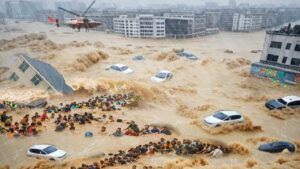
A climate refugee is someone who is forced to leave their home due to climate-related events, such as droughts, desertification, sea level rise, or disruption of seasonal weather patterns. The term is often used in the media, but it’s not officially recognized in international law.
Climate migration is devastating people’s lives. Imagine losing your home or livelihood due to a flood. Going hungry because of a failed harvest or drought. Or being forced to flee your village due to desertification, rising sea levels or a lack of clean drinking water.
This is the reality for millions and millions of climate refugees who live on the frontlines of the climate crisis. For them, climate change is real, and it is happening now. And as the threat of climate change increases globally, the number of climate migrants will grow exponentially.
An annual average of 21.5 million people were forcibly displaced each year by weather-related events – such as floods, storms, wildfires and droughts – between 2008 and 2016, according to the International Displacement Monitoring Centre. This figure reached a record 32.6 million in 2022. The IEP, an international thinktank, expects this number to surge. It predicts that 1.2 billion people could be displaced globally by 2050 due to climate change and natural disasters.
“Climate change knows no borders,”“Collective action is needed immediately to mitigate its effects, especially on those most vulnerable.”
source



